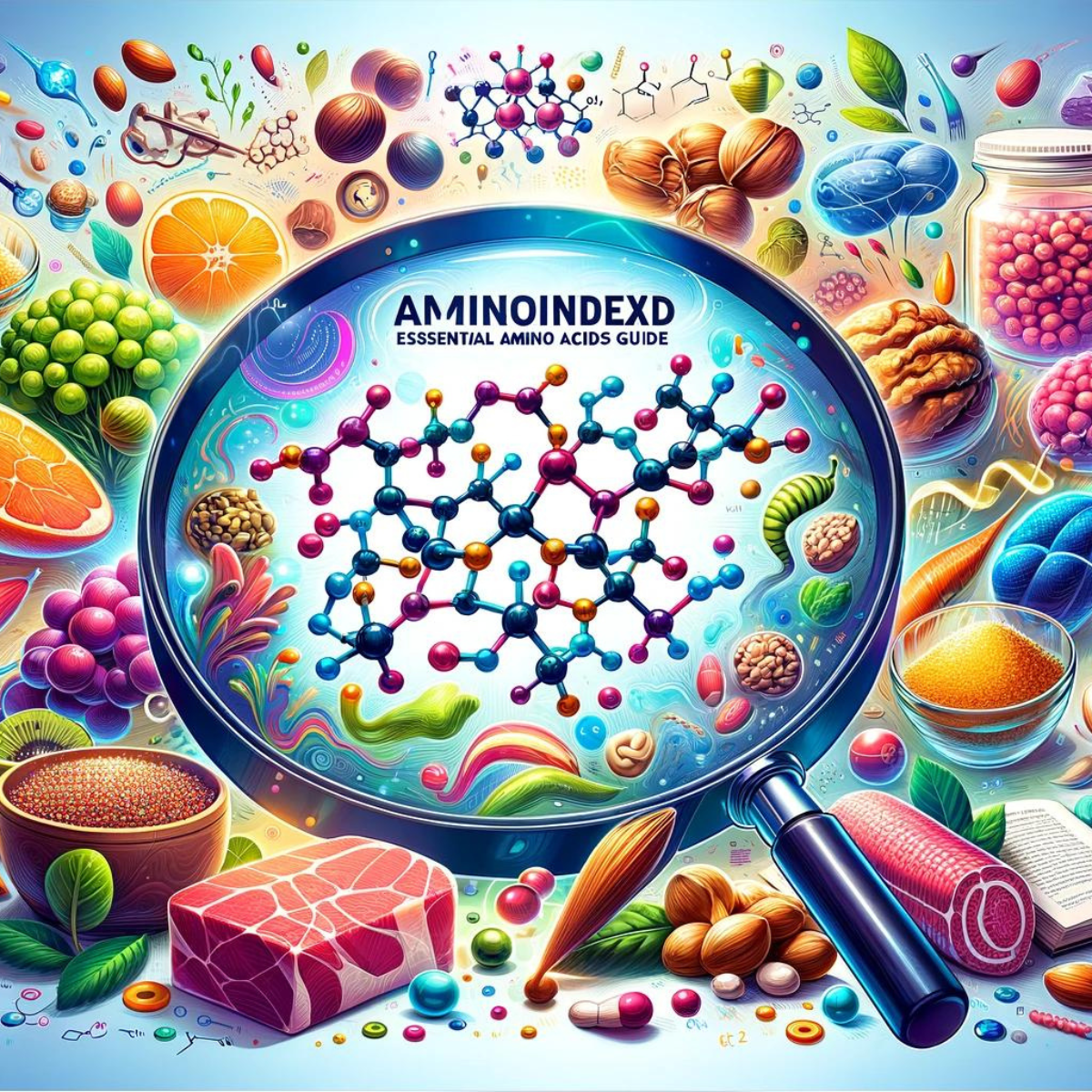Palmitoylethanolamide (PEA) is a naturally occurring fatty acid amide, hailed for its remarkable anti-inflammatory and analgesic properties. Within the human body, PEA plays a pivotal role in a biological orchestra, fine-tuning our response to pain and inflammation. This compound, nestled within the family of N-acylethanolamines, is not just a product of our physiology but also found in various foods, painting a picture of its ubiquity and importance. Over the years, PEA has captured the attention of the scientific community, leading to a plethora of research aimed at unravelling its therapeutic potential. From chronic pain to neuroprotective benefits, PEA stands out as a beacon of hope for those seeking relief through natural avenues. This article delves into the heart of PEA, exploring its mechanisms, benefits, and the promise it holds for future medical applications. As we journey through the science behind PEA, we uncover not just a molecule, but a natural ally in the quest for health and well-being.
Chemical and Biological Nature
Palmitoylethanolamide (PEA), a compound nestled within the class of N-acylethanolamines, is distinguished by its unique chemical structure: a fatty acid amide consisting of a palmitic acid linked to an ethanolamine. This structure is crucial for its biological activities, including its roles in anti-inflammatory and analgesic responses. Synthesized endogenously within cells through a response to cellular stress or injury, PEA's production and degradation are tightly regulated by specific enzymes, highlighting its role in the body's natural mechanisms for maintaining homeostasis.
PEA's interaction with the body extends beyond simple biochemical reactions. It exerts its effects through a variety of mechanisms of action, primarily engaging with the peroxisome proliferator-activated receptor alpha (PPAR-α), a key player in the regulation of pain and inflammation. Unlike other compounds that might directly stimulate cannabinoid receptors, PEA enhances the endocannabinoid system's functionality indirectly, offering a unique approach to modulating bodily responses without the psychoactive effects associated with direct cannabinoid receptor agonists.
The biological significance of PEA is further emphasized by its presence in various foods, such as eggs, peanuts, and soybeans, suggesting a role in the diet that could influence its levels within the human body. This aspect of PEA points to the potential for dietary intake to modulate its physiological effects, offering an intriguing avenue for research into how nutrition can impact inflammation and pain management.
In the broader scope of biomedical research, PEA's neuroprotective and anti-inflammatory properties have garnered attention, positioning it as a promising candidate for addressing a wide range of conditions, from neuropathic pain to inflammatory diseases. The exploration of PEA's chemical and biological nature thus not only reveals the complexities of this compound but also underscores its potential as a natural therapeutic agent, promising a future where PEA's full spectrum of benefits can be harnessed for health and healing.

Mechanisms of Action
Palmitoylethanolamide (PEA) operates through a multifaceted mechanism of action, distinguishing it as a potent modulator of pain and inflammation without directly binding to the cannabinoid receptors. Its primary mode of therapeutic action is through activation of the peroxisome proliferator-activated receptor alpha (PPAR-α), a nuclear receptor that plays a critical role in lipid metabolism, inflammation regulation, and pain perception. By activating PPAR-α, PEA exerts anti-inflammatory and analgesic effects, reducing the production of pro-inflammatory molecules and altering pain signalling pathways.
Another key aspect of PEA's action is its influence on the endocannabinoid system (ECS), albeit indirectly. PEA enhances the activity of endocannabinoids by inhibiting the breakdown of anandamide, an endogenous cannabinoid receptor agonist, thus leading to increased anandamide levels in the body. This process, known as the "entourage effect," amplifies the pain-relieving and anti-inflammatory effects mediated by the ECS without eliciting the psychoactive effects associated with direct cannabinoid receptor activation.
PEA also modulates cellular responses through its interaction with mast cells, immune cells known for their role in inflammation and allergic reactions. By stabilizing mast cells, PEA prevents the release of inflammatory mediators, further contributing to its anti-inflammatory capabilities. This action is particularly relevant in conditions characterized by neuroinflammation, where PEA's ability to limit the activation of mast cells and glial cells can lead to neuroprotective and analgesic outcomes.
Research into PEA's mechanisms of action has also revealed its role in pain management beyond inflammation control. PEA influences pain perception through several pathways, including the reduction of neuronal excitability and modulation of pain signals at both peripheral and central levels. This broad spectrum of action positions PEA as a versatile molecule capable of addressing various types of pain, from neuropathic to inflammatory pain.
The multifaceted mechanisms of action of PEA underscore its potential as a natural therapeutic agent for a wide range of conditions. By targeting different aspects of pain and inflammation simultaneously, PEA offers a promising approach to treatment that could complement or even provide an alternative to traditional pharmacological therapies, with the advantage of a favourable safety profile and minimal side effects.
Therapeutic Uses and Benefits
Palmitoylethanolamide (PEA) has garnered significant interest for its therapeutic uses and benefits, particularly in managing pain and inflammation. Its unique mechanisms of action, including activation of PPAR-α and modulation of the endocannabinoid system, provide a broad spectrum of potential therapeutic applications.
Chronic Pain Management
PEA has been extensively studied for its efficacy in treating various forms of chronic pain, including neuropathic pain, fibromyalgia, and pain associated with conditions like lower back pain and osteoarthritis. Its ability to reduce pain intensity without the side effects commonly associated with conventional pain medications makes it a compelling option for long-term pain management.
Inflammatory Conditions
Due to its potent anti-inflammatory properties, PEA is also effective in managing inflammatory conditions. This includes autoimmune diseases, such as rheumatoid arthritis, and inflammatory skin conditions like eczema and psoriasis. By modulating the immune response and reducing inflammation, PEA can alleviate symptoms and improve quality of life for individuals with these conditions.
Neuroprotective Effects
PEA's neuroprotective capabilities have been explored in the context of neurodegenerative diseases, such as Alzheimer's disease and multiple sclerosis. Its ability to stabilize mast cells and prevent the release of pro-inflammatory mediators in the nervous system can protect neurons from damage and slow disease progression.
Other Potential Benefits
Research has indicated potential benefits of PEA in a variety of other areas, including:
- Migraine prevention and reduction in frequency and intensity of headaches.
- Management of intestinal inflammation and irritable bowel syndrome (IBS), through its anti-inflammatory effects on the gut.
- Reduction of mast cell-mediated allergies and respiratory conditions, offering relief from symptoms without the side effects of traditional antihistamines.
Safety and Side Effects
One of the most significant advantages of PEA is its safety profile. Clinical trials and user reports have highlighted its low risk of side effects, making it a suitable option for long-term use. Unlike many pharmacological treatments, PEA does not carry a risk of dependency or withdrawal symptoms, further enhancing its therapeutic appeal.
The broad therapeutic potential of PEA, combined with its safety and the absence of significant side effects, positions it as a promising natural compound for managing a wide range of conditions. As research continues to unfold, the full scope of PEA's benefits is likely to expand, offering new avenues for treatment and improving patient outcomes.
Shop PEA Pain Relief
Conclusion
In summary, Palmitoylethanolamide (PEA) represents a compelling natural compound with a broad spectrum of therapeutic potentials. Its unique mechanisms of action, primarily through PPAR-α activation and modulation of the endocannabinoid system, offer promising avenues for managing pain, inflammation, and various neurodegenerative conditions. The safety profile of PEA, coupled with its efficacy demonstrated in numerous studies, positions it as an attractive alternative or adjunct to conventional treatments. As research continues to unveil the full scope of PEA's benefits, it stands as a testament to the power of natural substances in contributing to human health and wellness. The future of PEA in therapeutic applications looks promising, potentially revolutionizing how we approach the treatment of chronic pain and inflammation.
Disclaimer:
This article provides information on Palmitoylethanolamide (PEA) for educational purposes only and is not intended to serve as medical advice. The content herein is based on research findings and general information available up to this point. Individuals considering the use of PEA for therapeutic purposes should consult with a healthcare professional to determine the appropriateness based on their health status and medical history. While PEA is known for its safety profile and potential health benefits, individual responses can vary, and it is essential to approach its use under professional guidance. The information presented does not cover all possible uses, actions, precautions, side effects, or interactions of PEA, and it is not intended as medical advice for individual conditions or treatments.
References:
-
Clayton, P., Hill, M., Bogoda, N., Subah, S., & Venkatesh, R. (2021). Palmitoylethanolamide: A Natural Compound for Health Management. International Journal of Molecular Sciences, 22(10), 5305. https://doi.org/10.3390/ijms22105305
-
Artukoglu, B.B., Beyer, C., Zuloff-Shani, A., Brener, E., & Bloch, M.H. (2017). Efficacy of Palmitoylethanolamide for Pain: A Meta-Analysis. Pain Physician, 20(5), 353-362. https://pubmed.ncbi.nlm.nih.gov/28727699/
-
Gabrielsson, L., Mattsson, S., & Fowler, C.J. (2016). Palmitoylethanolamide for the Treatment of Pain: Pharmacokinetics, Safety, and Efficacy. British Journal of Clinical Pharmacology, [First published: 24 May 2016]. https://doi.org/10.1111/bcp.13020
-
Gatti, A., Lazzari, M., Gianfelice, V., Di Paolo, A., Sabato, E., & Sabato, A.F. (2012). Palmitoylethanolamide in the Treatment of Chronic Pain Caused by Different Etiopathogenesis. Pain Medicine, 13(9), 1121–1130. https://doi.org/10.1111/j.1526-4637.2012.01432.x
-
Petrosino, S., & Schiano Moriello, A. (2020). Palmitoylethanolamide: A Nutritional Approach to Keep Neuroinflammation within Physiological Boundaries—A Systematic Review. International Journal of Molecular Sciences, 21(24), 9526. https://doi.org/10.3390/ijms21249526



















